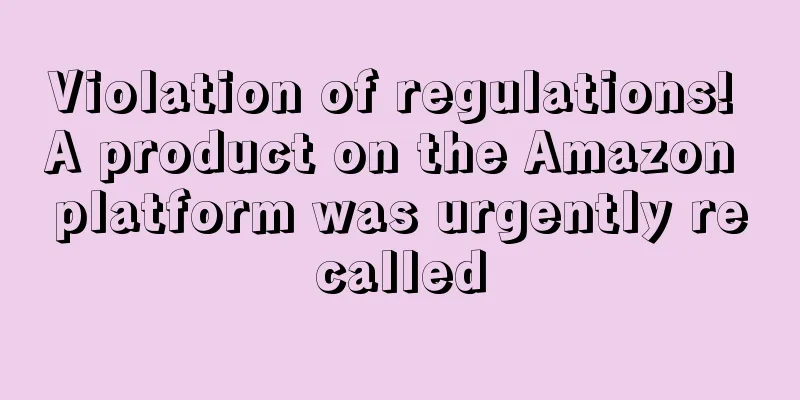Amazon delays collecting a fee, sellers say it should be canceled

|
Perhaps Amazon has heard the voices of sellers and has temporarily suspended the collection of a fee.
Amazon suspends low inventory level fees for April
On April 1, the FBA low inventory level fee officially took effect, and many sellers said it hurt. One seller said: " Amazon is really robbing money, charging a low inventory level fee of $0.97! They can obviously rob, but they still come up with such a name! " Another seller also reminded his peers: "The low inventory level fee must not be ignored."
On the same day, the platform listened to the sellers' feedback and decided to provide them with a one-month transition period.
Amazon announced that it will still charge FBA low inventory level fees incurred between April 1 and April 30, but after the end of the month, all fees collected during this period will be returned to the seller's account, and the seller can see the refund in May.
The goal is to give sellers visibility into the end-to-end experience so that further updates to inventory management can be made, maintaining adequate stock levels, driving greater sales, and avoiding future fees.
The FBA Low Inventory Level Fee applies to products that have consistently low inventory levels relative to their unit sales. Maintaining adequate inventory levels allows Amazon to increase shipping speeds and drive more sales for sellers by distributing products efficiently.
It is worth noting that starting from May 1st, the fee will be officially collected and will no longer be refunded.
Amazon also reminds sellers that they can avoid this fee by ensuring that the long-term historical supply days (past 90 days) or short-term historical supply days (past 30 days) exceed 28 days (4 weeks).
After seeing Amazon's announcement, some sellers still doubted: "Is it because of April Fools' Day?" Some sellers found it hard to believe that Amazon had suddenly suspended its fees. However, Amazon's vice president also confirmed the news in a statement.
On April 1, Amazon Vice President Damesh Mehta posted on LinkedIn: "We have heard feedback from many sellers that they are not sure how the new fees will affect their business. To help address these issues, we have decided to use April 2024 as a transition period, during which all low inventory level fees will be refunded to sellers."
Sellers: Low inventory level fees should be eliminated
Some sellers agree that Amazon's policy will temporarily ease the pressure on sellers, saying it will help. But the fee still causes complaints from most people.
One seller said: “ The low inventory level fee needs to be eliminated completely. Amazon already charges us a placement fee . There is no reason to charge this fee. With the new placement fee already charged by the platform, Amazon is telling us where to ship our products based on historical data and consumer trends. We are paying for this now. However, on the back end , we are being charged when we cannot keep up with a 28+ day supply.”
Not only that, but some products are seasonal, which Amazon doesn’t take into account at all. It makes no sense for Amazon to do this except charge more. ”
Other colleagues share the same view, and everyone calls for this fee to not be delayed and should be canceled.
“- Amazon charges a lot of FBA fees and will charge more; —This expense is unreasonable, as sales sometimes depend on the season and sometimes on the carrier; ——This is why I refuse to do FBA. Amazon will undergo great changes in the future; - This will hurt Amazon in the long run. Higher prices are not a good thing, and Walmart is becoming a competitor to Amazon without ripping off sellers with such fees. "
In the comment section of the Amazon vice president's post, a seller pointed out: "These fees are a trap from the beginning to the end! Sellers with less inventory have to pay low inventory level fees, and with more inventory, they have to pay storage fees. The sales of any product are not linear or consistent. There are problems such as seasonality, economics, and delays caused by Amazon operators.
There are many variables that are beyond our control, so this expense is inevitable. Therefore, along with other fees and expenses, we can expect a massive loss of Amazon’s market share. ”
This fee has a greater impact on sellers of seasonal products. A seasonal seller with 14 years of experience said that inventory is always low in the off-season, and the weather also has a direct impact on sales. I don’t understand why Amazon uses the wrong recommended inventory levels and makes sellers bear low or high inventory costs. It seems unfair to punish sellers when they are faced with supply chain challenges that are completely beyond their control.
Another peer raised four questions in a row: 1. How are historical supply days calculated? There is randomness in it , or we cannot find a predictable pattern . 2. What if you want to stop selling a product after the season ends and only sell it during the season ? 3. What if there are multiple sellers for a product? Will all sellers involved be charged? 4. What if it takes a long time for Amazon to receive the product? This happens quite frequently.
Obviously, due to the uncertainty, many sellers cannot clearly understand how this fee is calculated and where the sales data comes from. One seller lamented: "If someone can calculate it, it would be magical!"
As fees increase, sellers face a dilemma
In response to sellers' questions, Amazon said that the minimum inventory level is tailored for each product by using inventory management and machine learning models, while taking into account factors such as demand forecasting and replenishment settings.
The historical supply days is a retrospective statistical indicator that is used as the basis for the low inventory level fee . When the historical supply days indicator is low, it means that the inventory level of the product has been low in the past, so the corresponding fee needs to be paid.
For standard-sized products whose inventory levels are lower than the demand of customers, Amazon charges a low inventory level fee. This fee is charged for each item shipped, ranging from $0.32-$0.89 for small standard-sized products, $0.36-$0.97 for large standard-sized products, and $0.47-$1.11 for large standard-sized products weighing 3 to 20 pounds.
Amazon charges this fee when the product’s inventory level relative to historical demand is less than 28 days, and both the long-term historical supply days (past 90 days) and the short-term historical supply days (past 30 days) are less than 28 days (4 weeks) .
Now that the low inventory level fee has been suspended, sellers can adapt first. But some sellers are still worried about the fees that will be charged in May.
" As platform sellers, the platform will charge whatever fees it wants, and we have no ability to resist. If we want to reduce our dependence on the platform, we must develop a multi-channel layout! " lamented a seller.
In the opinion of an industry insider, Amazon's advantages are weakening year by year, and sellers are caught between a rock and a hard place, and will definitely seek alternatives. Especially the recent move to increase these fees. All sellers know that the platform needs to be profitable, and that consumption-based services and fees make sense, but the rate at which fees are rising seems to be beyond the reach of most sellers. Amazon Low inventory level fees |
>>: Monthly sales exceeded 1 million US dollars! Another domestic brand is popular overseas
Recommend
What is GoLootLo? GoLootLo Review, Features
GoLootLo is a wallet launched by the National Ban...
What is Crosstour? Crosstour Review, Features
Crosstour is a brand that focuses on selling actio...
For off-site promotion in 2023, how do sellers choose the delivery platform?
At the beginning of the new year, as the e-commer...
There is a shortage of alcohol during the holidays in the UK, and price increases are inevitable!
As essential products for celebrating festivals ,...
Home improvement performed well, accounting for 40% of TJX's sales
That was up from 33% the year before . HomeGoods&...
What is AjMall? AjMall Review, Features
AjMall is a mobile e-commerce platform targeting ...
More than 20 people were arrested! Amazon is cracking down
Amazon is vigorously promoting the compliance pro...
In less than two years, Temu has opened 73 markets!
When it comes to Temu, there are many people who ...
What is T-HUB? T-HUB Review, Features
T-HUB's e-commerce order manager is a cloud-ba...
Beware! Many products on Amazon and other platforms have been urgently recalled
As we all know, foreign regulatory agencies attac...
What is danubedirectme? danubedirectme Review, Features
danubedirectme is an exciting new way to shop fo...
What is Next Century Capital? Next Century Capital Review, Features
Next Century Capital is the fastest growing acquir...
What is Wild One? Wild One Review, Features
Wild One is the new one-stop shop, making everythi...
What is Bizbilla? Bizbilla Review, Features
Bizbilla is an India-based B2B marketplace that h...
Amazon's internal competition escalates? Black hat sellers buy negative reviews to launch malicious attacks
Today, the editor learned from the Amazon officia...









